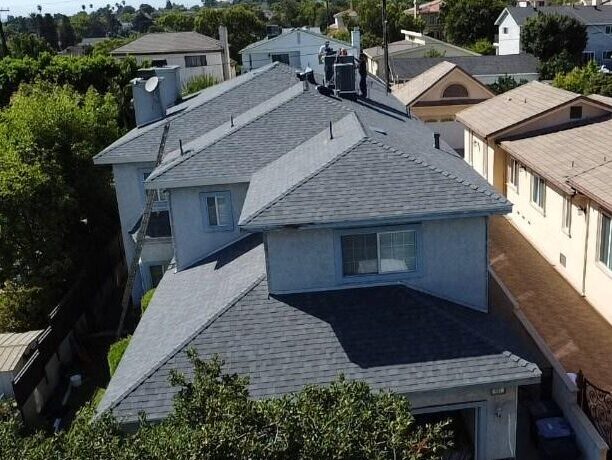Introduction: The Importance of Roofing in Environmental Sustainability
When it comes to sustainable living and reducing our carbon footprint, the choice of roofing material plays a pivotal role. Homeowners are increasingly becoming aware of how their choices affect the environment. From energy efficiency to waste generation, various roof types have distinct environmental impacts. In this article, we'll explore these impacts in detail, guiding you through an informed decision-making process regarding roofing materials.

What Is The Environmental Impact of Different Roof Types?
Understanding the environmental impact of different roof types requires us to consider several factors, including energy efficiency, material sourcing, longevity, and recyclability. Each type of roofing material presents unique advantages and disadvantages that can either mitigate or exacerbate environmental issues.
1. Energy Efficiency and Insulation
Energy-efficient roofs can significantly reduce heating and cooling costs. For instance:

- Metal Roofing: Often touted for its reflective properties, metal roofs can deflect solar heat, keeping your home cooler in summer. Asphalt Shingles: While cheaper upfront, they tend to absorb more heat, leading to higher energy consumption for air conditioning.
In contrast, materials like tile or slate possess excellent thermal properties but come with their own set of challenges.
2. Material Sourcing and Sustainability
The materials used in roofing also affect its overall sustainability:
- Metal Roofing Near Me: Sourced from recycled materials and highly durable, metal is often seen as an eco-friendly option. Wood Shakes: Though aesthetically pleasing, they raise concerns about deforestation unless sourced sustainably.
Choosing products from local suppliers like Eclipse Remodeling and Roofing Inc not only supports the local economy but also reduces transportation emissions.
3. Longevity and Durability
A roof's lifespan directly correlates with its environmental footprint:
- Metal roofs last between 40-70 years. Asphalt shingles typically need replacing every 15-30 years.
Shorter lifespans mean more waste in landfills and increased resource consumption for replacements.
4. Recyclability and Waste Generation
At the end of their life cycles:
- Metal roofs can often be recycled multiple times. Asphalt shingles contribute significantly to landfill waste; only a small percentage gets recycled.
Thus, selecting recyclable materials helps reduce long-term ecological impacts.
Different Roofing Types: A Closer Look
5. Metal Roofing: An Eco-Friendly Choice
Metal roofing is gaining traction as a sustainable option due to its longevity and recyclability. It reflects sunlight effectively, reducing cooling costs in warmer climates. Homeowners searching for "metal roofing near me" will find that many local suppliers offer options made from recycled materials.
Advantages:
- Durability (up to 70 years) Energy efficiency Recyclable
Disadvantages:
- Higher initial costs Noise during rain or hail
6. Asphalt Shingles: A Common Yet Costly Option
Asphalt shingles are perhaps the most popular roofing material in North America due to their affordability. However, they come with significant drawbacks regarding environmental impact.

Advantages:
- Low initial cost Easy installation
Disadvantages:
Metal Roofing Near Me in Los Angeles- Short lifespan Less energy efficient compared to metal options
Understanding the Environmental Impact of Different Roof Types: Concrete Tile Roofing
7. Concrete Tile: Heavyweight Champion
Concrete tiles offer durability but come with a high environmental cost due to their production process.
Advantages:
- Long-lasting (50+ years) Fire-resistant
Disadvantages:
- Heavy weight increases structural demands High embodied energy during production
Wood Shake Roofs: Natural Beauty vs Environmental Concerns
8. Wood Shake Roofing: Nature's Touch
While wood shakes provide natural aesthetics and insulation benefits, they pose significant sustainability questions regarding sourcing practices.
Advantages:
- Excellent insulation
Disadvantages:
- Vulnerable to insects Requires regular maintenance for longevity
Green Roofing Solutions
9. Green Roofs: Nature on Your Roof
Green roofs serve as an innovative solution that provides multiple environmental benefits while adding beauty to buildings.
Advantages:
- Reduces urban heat island effect
Disadvantages:
- Requires structural support
Solar Roofs: Harnessing Renewable Energy
10. Solar Roof Systems: The Future is Bright!
Solar panels integrated into rooftops are becoming increasingly popular among environmentally-conscious homeowners who want to harness renewable energy directly from their rooftops.
Comparing Costs vs Benefits
| Roofing Type | Lifespan | Cost | Recyclable | Energy Efficiency | |-----------------------|----------|----------|------------|-------------------| | Metal | 40–70 yrs| $$$$ | Yes | High | | Asphalt Shingles | 15–30 yrs| $$ | Limited | Medium | | Concrete Tile | 50+ yrs | $$$$ | No | Medium | | Wood Shake | 20–40 yrs| $$$ | Limited | High | | Green Roof | Varies | $$$$ | N/A | Very High |
FAQs About Roofing Materials
What’s the most eco-friendly roofing material?- Metal roofing often tops the list due to its recyclable nature and longevity.
- Hot climates benefit from reflective roofs like metal, while cold climates may require better insulation properties found in tile or asphalt.
- They provide excellent insulation and biodiversity but require careful planning and investment.
- Generally yes; however, flat surfaces like concrete are easier for installation compared to steep slopes like tile roofs.
- Regular inspections can prolong your roof’s life without needing replacement frequently.
- Searching “metal roofing near me” online will yield results tailored for your location.
Conclusion: Making Informed Choices
Choosing a roof involves considering various elements beyond mere aesthetics or cost—it's about sustainability too! As we delve deeper into our understanding of the environmental impact of different roof types, we empower ourselves to make better choices for our homes—and ultimately our planet! Whether you opt for durable metal roofs or consider innovative green solutions offered by companies like Eclipse Remodeling and Roofing Inc, each decision counts towards creating a more sustainable future!
This comprehensive guide sought to elevate your understanding of how different roofing types interact with our environment while providing actionable insights tailored for homeowners looking for sustainable solutions such as "metal roofing near me." By making informed choices today, you’re investing not just in your home but also contributing positively toward a healthier planet tomorrow!